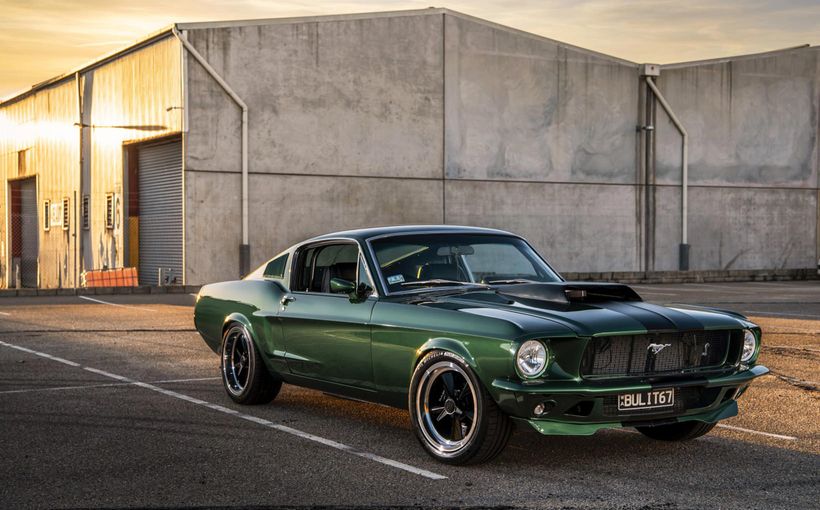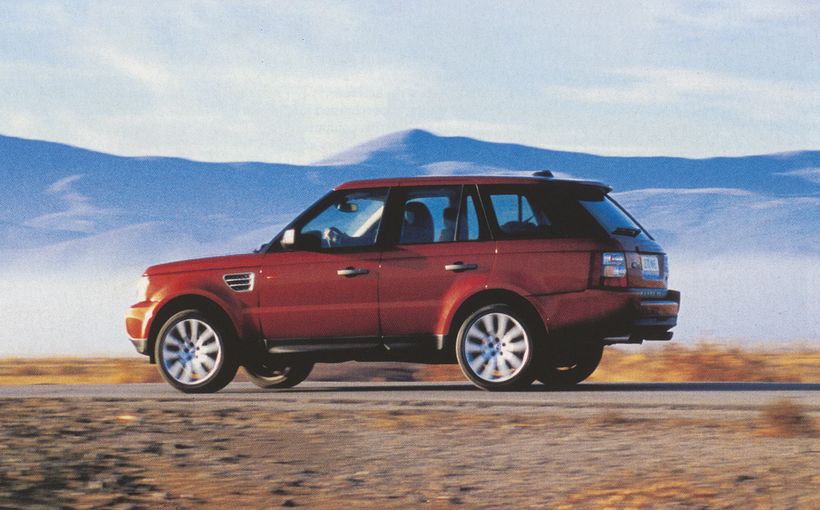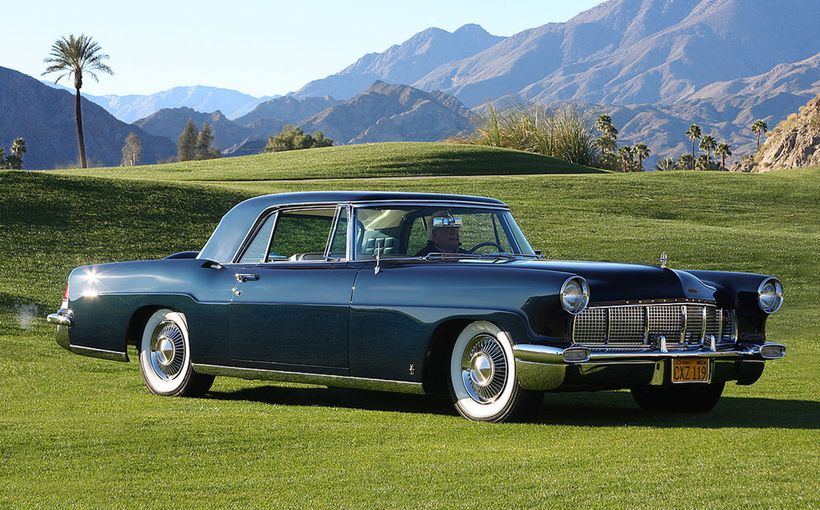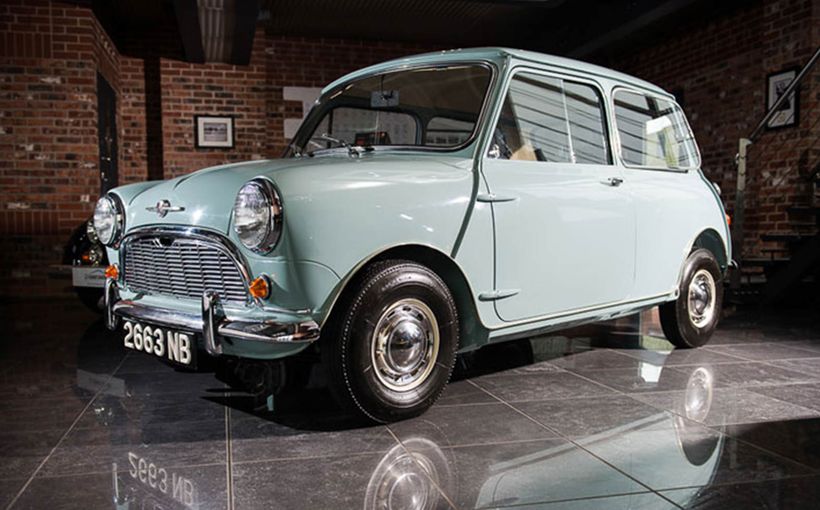Range Rover: luxury automotive travel reimagined

By the time I first got behind the wheel of a Range Rover, this famous car had already been on sale locally for more than nine years. It was in the spring of 1981 on my first ever media launch, an occasion filled with more significance that I could ever have expected on flying out of Sydney. I was there to represent Wheels magazine and my report was published some months later in the March 1982 edition.
The location was the Wonnangatta Valley in the Victorian High Country. Our final approach was by helicopter. As we hovered above the ruins of the old homestead (burnt down in 1957), an array of Land Rovers promised an eventful couple of days. The immediate irony for me was that I had only ever been to this paradisal valley once before, in 1966, and my three or so subsequent attempts had ended with my failing to arrive either due to vehicular failure or poor navigation. And here we were just dropping in by helicopter. It was also the first time I’d been in one of those.

The occasion, organised by Leyland Australia, was the launch of the Isuzu-engined diesel Land Rover, a vehicle which a couple of the young JRA engineers took considerable delight in describing as remarkably torquey; their preferred expression was – politically incorrect even in 1981 before the term ‘politically incorrect’ had been coined – ‘it pulls like a 14-year-old’.
We were all duly impressed by this and other attributes of what seemed to be a curiously Japanese-English vehicle, but my greatest delight came when I sampled a Range Rover. Despite having been on the UK market for more than 11 years, the Rangey was still a two-door-only vehicle. Wisely, Leyland Oz had just introduced an automatic transmission option before the British factory could get around to it.

Just think about that for a moment. From 1970 to the latter part of 1981, all Range Rovers were two-door four-speed manuals. The amazing paradox is that, even after a decade which saw some magnificent new cars such as the S-Class Mercedes, Alfetta, 7-Series BMW, even our own HQ and VB Commodore Holden ranges and the XA Falcon, the Range Rover remained unique, one of the world’s greatest vehicles and the most competent offroader at any price – unless, just possibly, this new Isuzu-engined stablemate had its measure.

The white Range Rover I drove in the Wonnangatta region was equipped with a Borg-Warner 35 three-speed automatic transmission, fitted as an aftermarket option by a specialist company. The conversion cost $2700 in the day, back when a standard Rangey cost just $19,600 or $20,450 with air-conditioning. After a Series 3 Jaguar XJ saloon and the aforementioned Land Rover, this was the third ever brand new car I had experienced driving as a motoring journalist. I was gobsmacked, even though the Range Rover’s reputation long preceded my drive:
Switching from any of the Land Rovers to either of the Range Rovers underlined the massive differences between the two designs. The Range Rover will go anywhere the old beast will, but you don’t suffer in the same way. Power steering that controls a tight turning circle and delivers magnificent feel, four-wheel discs, luxury interior, and just about every other aspect of the machine insulate you from the environment.
I was astonished when deputy general manager of Leyland Australia, Jack Heaven, likened it to a mule: ‘It’s like a mule,’ he said. ‘It will pick its own path down any hill.’ But in no other way is it remotely like a mule and it copes with virtually impassable tracks with the same aplomb that a good contemporary sedan displays on a dirt road. In the Range Rover (aptly, the RR) you travel across or through the landscape; in the LR you remain in constant contact with your surroundings – you know you are roughing it. Even the latest Land Rover with its three decades plus of steady refinement tells it like it is, while the RR translates the rigours of the bush. The automatic version is incongruously supple, the worst fault of the manual Range Rover being the manual – still slow and notchy despite recent revisions.

Soon, in a management buyout, Leyland Australia became Jaguar Rover Australia (JRA) and the new company became famous for truly lavish media launches in remote locations; for one function (which I didn’t attend), the staff of one of Melbourne’s top restaurants was flown into the Victorian High Country and served a five-star banquet in a marquee. Generally, the car being featured was the Range Rover in whichever slightly revised iteration applied at the time. I attend another function where royalty in the surprisingly blokey guise of Captain Mark Phillips was the guest of honour. (That one might have been the Range Rover Vogue, I’m guessing!)
We drove Range Rovers on narrow mountain tracks, traversed fast-flowing streams and drove hundreds of kilometres over all manner of roads. The effect of all this on me was to come to think of the Range Rover as a kind of ultimate vehicle. In lots of ways it was; in important other ways, it was not. When I eventually bought one in 2001, I acquired a more measured view. My car was a pale blue 1982 four-door manual, of which more later in this story.
As remarkably impressive as that 1981 automatic specimen seemed to me, even more remarkable was how fundamentally unchanged from the 1970 original it was. Even the Volkswagen Beetle seemed to have changed more rapidly from, say, 1950 to 1961, an equivalent period.
The reason Leyland Australia was not able to release the Rangey locally until July 1972 was the lack of supply. The car was assembled (not especially well) from CKD kits (but then those early cars were never well made anywhere in the world). International demand was huge amid widespread recognition that here was a radically new type of vehicle. But even in such a context, I never heard anyone predicting then – or even before the turn of the century – that a well specified wagon with offroad ability would eventually replace the three-box sedan and related station wagon as the vehicle of choice for a majority of owners; the dreaded Americanism ‘Sports Utility Vehicle’ didn’t trip off Aussie lips last century. Make no mistake, this seismic shift had its origins in the Range Rover, as opposed to in the Land Rover, Jeep or anything else.

However, a caveat is required here. Rover was heavily influenced by the Jeep in creating its Land Rover in the first instance and the primacy of the Jeep in the evolution of four-wheel-drive vehicles can scarcely be over-estimated. It is also indisputably the case that Jeep was the first manufacturer to blend the idea of a fairly well-equipped wagon with the versatility of drive to all four wheels; the Wagoneer made its debut in 1963. The Wagoneer was expensive and appealed to quite a high demographic. But I still maintain that the Range Rover with its delightful handling, unmatched ability over any kind of terrain and unique styling was the real precursor of what might be termed the luxury SUV. Comparing a 1970 Range Rover with a 1963 Jeep Wagoneer is like comparing a 1972 Mercedes-Benz S-Class with a well-optioned Mercury or Chrysler.
That’s why, for my money, the Range Rover was the second most significant vehicle of the twentieth century after the Ford Model T. It is also why the original two-door version is so revered by collectors.
Like so many of the greatest inventions, the Range Rover’s origins seem surprisingly simple – hardly the proverbial bolt (of inspiration) from the blue. The starting point was the Land-Rover (hyphen then mandatory!) Station Wagon, as shown at the London commercial motor show in October 1948. This ungainly vehicle used the standard Land-Rover’s short 80-inch wheelbase and its bonnet and front guards. The main body comprised alloy panels with steel gussets on a traditional coachbuilder’s ash frame.
The wagon was a sales flop with just 641 finding customers before production ended in 1951. One reason was the high price of the custom body. By April 1952, Rover had a prototype Road-Rover, the brainchild of Maurice Wilks. This vehicle was more carlike and was based on the P4 sedan. The rear-wheel-drive Road Rover had independent front suspension by coils and wishbones.
Further prototypes were produced and by 1954 the master plan seemed to include four-wheel-drive. But the breakthrough came with the Series II Road-Rover of 1956. Automotive historian James Taylor writes:
The Series II Road-Rover represented a significant advance in the development of those ideas which would crystallise successfully more than a decade later in the Range Rover…combining the utility and ruggedness of the Land-Rover with levels of comfort and styling more appropriate to a saloon car.
Eventually, the Road-Rover project was scrapped in the first quarter of 1959. This timing is interesting because it was just months after the debut of the P5 3-Litre sedan; even that car’s straight six-cylinder engine lacked the kind of low-down torque the Rover engineers sought for the ill-fated Road-Rover.

It is always difficult to be precise about cause and effect in the evolution of new vehicles but it does seem highly probable that one of the decisive factors in the decision by Rover management in mid-1966 to authorise New Vehicle Projects to begin work on a ‘100-inch Station Wagon’ – the ‘100’ referring, of course, to the wheelbase – was the forthcoming availability of the ex-Buick 3.5-litre V8 engine.
Taylor continues:
The V8 engine would of course offer much better on-road performance than was available from contemporary Land-Rovers, and was to be coupled to a four-wheel-drive system which would give optimum off-road performance as well. Unlike the Land-Rover’s system, this four-wheel-drive was to be permanently engaged for two main reasons: first, that it gave better on-road handling in slippery conditions; and second, that it enable the massive torque of the V8 engine to be split between two relatively light axles.
By this time, Rover had been swallowed by Leyland Motors, but blessedly chief executive Donald Stokes gave the 100-inch Station Wagon his approval. Before the end of 1967 the shape of what would become the Range Rover was set and thought was even given to reviving the Road-Rover name. On 18 December 1968 a meeting between executives of the sales and engineering departments decided on the name ‘Range Rover’ (without a hyphen), following the suggestion of one of the stylists, Tony Poole. It was also resolved to drop any consideration of offering a four-cylinder version as a (marginally) cheaper alternative to the V8. Automatic transmission was the proverbial bridge too far for the available engineering resources, but constant four-wheel-drive with a limited-slip locking centre differential and other key elements were settled. (The limited-slip feature was deleted in late 1970, deemed redundant.)
One day less than 18 months later (17 June 1969) the Range Rover was unveiled to the press in west Cornwall. The specification was comprehensive and unique: massive box-section chassis; beam axles front and rear; Boge Hydromat self-levelling rear suspension; Panhard rod and long forged steel radius arms locating the front axle; four-wheel discs; 135 bhp 3.5-litre V8, four-speed gearbox with two-speed transfer case. But the recirculating ball steering lacked power assistance and required four and three-quarter turns lock – about the only dynamic flaw.
The transmission controls were simple, a rather long gearlever, a shorter one for the transfer case and a pull-up switch for the locking centre differential.
Traditional Rover engineering abounded, for example in the use of aluminium alloy for the outer skin panels as seen on the 1948 Land Rover and the 1950 P4 sedans.
The rear tailgate had two sections, a framed window lifted by gas struts and a heavy steel tray.
Those early production cars at the press launch did however lack the kind of interior one might expect of such an upmarket wagon and, frankly, this was not entirely rectified for many years. Cheap vinyl trim, the most basic floor coverings and abundant bare metal entirely failed to denote luxury.
 Improvements were made through the 1970s but even my 1982 model had a shoddy finish with ill-fitting dashboard and a hodge-podge of minor controls. The manual window winders were ludicrously low-geared and yet stiff to operate. The velour used on the seats was better, but door trims and suchlike belied the superb engineering quality of the car (I always thought of it as a ‘car’ not a ‘truck’) which was an utter delight to drive.
Improvements were made through the 1970s but even my 1982 model had a shoddy finish with ill-fitting dashboard and a hodge-podge of minor controls. The manual window winders were ludicrously low-geared and yet stiff to operate. The velour used on the seats was better, but door trims and suchlike belied the superb engineering quality of the car (I always thought of it as a ‘car’ not a ‘truck’) which was an utter delight to drive.
In 1973 Adwest Varamatic power steering became an option and constituted a vast improvement with effortless parking and just three and a half turns to the circle.
The combination of ultra-long travel suspension and excellent seats gave a first-class ride and enthusiastic drivers soon grew accustomed to the extreme body roll, while the wheels always remained at right angles to the road. Those aforementioned JRA drive programs revealed the Rangey to be dynamically polished by the standards of the mid-1980s. No Land Cruiser or Patrol of the era came close. Probably the closest rival from a dynamic viewpoint was the surprisingly competent Mitsubishi Pajero.
Even the engine performance was impressive, certainly through until about 1985. Zero to 100km/h took 16 seconds and top speed was almost 155. I remember driving my Fiat 125 at 80 miles per hour (129) on the Newell Highway in 1976 and being overtaken by a Range Rover, its V8 engine note sounding relaxed and sonorous, and the vehicle looking so poised.
But a decade later, precious little had changed, beyond an extra pair of doors, the option of automatic transmission and some additional items of equipment. James Taylor observes:
To those who did not understand the financial problems which beset British Leyland in the mid-1970s, the Range Rover’s lack of development seemed nothing short of criminal.
A major cause of the waiting lists that prevailed through the 1970s was a shortage of engines. This was addressed for the coming decade and a facelifted Range Rover was shown in October 1979 at the Frankfurt show. Black plastic-coated bumpers, halogen headlights, decal badging and a four-spoke steering wheel of considerable elegance were highlights. For the first time, factory air-conditioning was available.
An up-spec Vogue variant arrived in February 1981 and later that year three-spoke alloy wheels were added to its already generous specification, including polished walnut door cappings, in-dash air and a picnic hamper. The Vogue received a higher-compression engine and taller gearing.

In July 1981 the four-door version finally came to market and proved so popular that it eventually replaced the two-door variant altogether. But the factory-fitted automatic transmission would not arrive until the European summer of 1982.
The following year saw a five-speed manual gearbox (also seen in the Jaguar XJ, Triumph TR7 and Rover SD1) replace the somewhat agricultural four-speed.

Nineteen eighty-six brought a major facelift with horizontal grille bars and cleaner detailing. Belatedly, the improvements kept coming. These included fuel injection, longer-wheelbase variants and an increase in engine capacity first to 3.9 and then to 4.2 litres. The ultimate first generation Range Rover was known as the Range Rover Classic because in 1995 when it made its debut the second generation P38A was already on sale.
Perhaps surprisingly, many enthusiasts would prefer to drive one of the last of the first series rather than the new and more complex P38A’s. The most sought-after model is the very early two-door.
Jaguar Land Rover (JLA) is intensely proud of its heritage. Jaguar has built the last of its 1957 XKSS’s and Lightweight E-Types as brand new cars and is offering Reborn (that is, restored from the ground up with all-new original parts) early E-Types. Land Rover offers both the Series I Land Rover and the two-door Rangey as Reborn models. Interestingly, the E-Type commands £285,000, more than double the Range Rover’s £135,000. In mid-2017, JLR Classic opened a new Classic Works headquarters in Coventry.
 Range Rover Reborn was launched at Salon Retromobile in Paris in February 2017. The very first project was a 1978 Bahama Gold car originally sold in the UK. How fitting that all these decades after it redefined the possibilities of a vehicle uniting both peerless offroad ability with the on-road talent of a luxury sedan, the original Range Rover is being celebrated in such spectacular fashion. I am rather wishing I had asked more than a few hundred dollars for my utterly weary and rusted-out 1982 model, from which I extracted great joy over more than a decade’s ownership and many kilometres of back country work, and, yes, including a trip into the Wonnangatta Valley!
Range Rover Reborn was launched at Salon Retromobile in Paris in February 2017. The very first project was a 1978 Bahama Gold car originally sold in the UK. How fitting that all these decades after it redefined the possibilities of a vehicle uniting both peerless offroad ability with the on-road talent of a luxury sedan, the original Range Rover is being celebrated in such spectacular fashion. I am rather wishing I had asked more than a few hundred dollars for my utterly weary and rusted-out 1982 model, from which I extracted great joy over more than a decade’s ownership and many kilometres of back country work, and, yes, including a trip into the Wonnangatta Valley!











